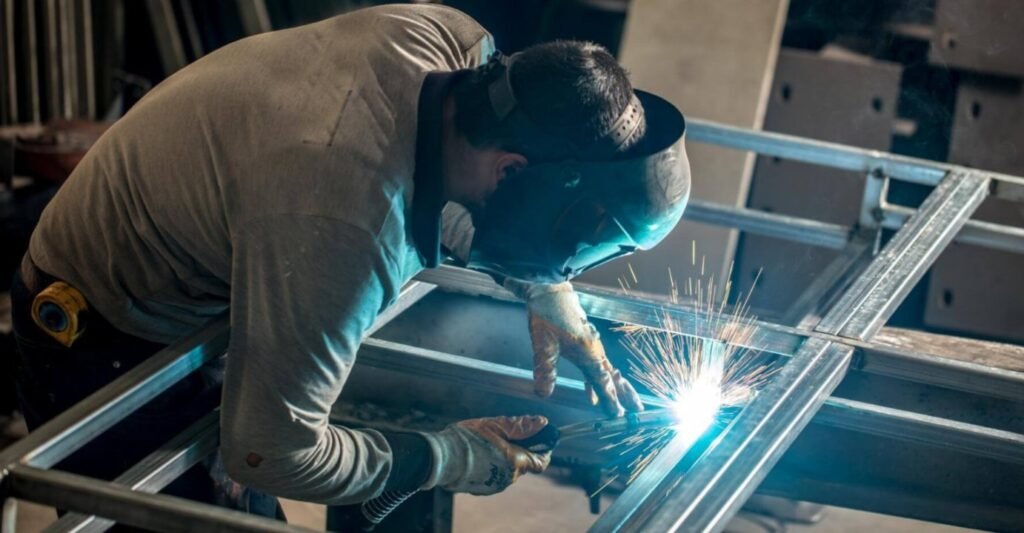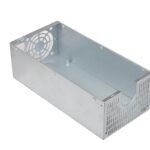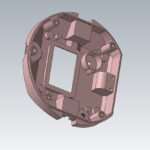Sheet metal fabrication is the process of shaping metals and molding them to make the best out of them. These useful things might range from daily use cutlery in the kitchen to heavy-duty machines in some industrial units. The excessive use of metals in our daily life is not a secret. Metals are a vital part of modern human life that has evolved with time and technology. Motor vehicles, airplanes, ships, medical instruments, home appliances, and many more are made after fabrication of the metal sheets, partly or wholly.
Metal fabrication is a process that includes manifold procedures. We can employ various steps to make a fantastic final product that will benefit man by all means. The combination of these processes may vary according to the needs of the specific products.
How Sheet Metal is Beneficial?
We can buy metals in a specific shape and form which is called sheet metal. Any metal that has a thickness of between 0.5-6 millimeters is sheet metal. There are various advantages of sheet metal in the relevant industry.
- Sheet metal design options are very flexible and affordable. It can provide high quality for production or prototyping. Hence, the clients can express the need for specific functionality.
- Single prototypes to volume production, everything is possible with sheet metal. It is highly suitable for contemporary production methods like 3D printing. It provides quick lead times which are well-aligned with the needs in prototyping.
- Sheet metal fabrication processes are suitable for a gradual transition from prototyping to large-scale production. It enables the small start from making prototype sets to go for larger quantities by establishing the required infrastructure.
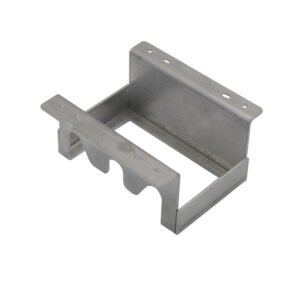
Some Techniques of Metal Fabrication
Laser Cutting Technique
Laser cutting is a process that uses a high-powered laser beam on a sheet material to heat and mold the material. Laser technology is the most widely used instrument for cutting metal sheets in the fabrication process. It provides highly clean touches to help in making a wonderful final product. A gas laser typically uses oxygen or nitrogen to gain high temperatures right before the laser exits the nozzle.
Plasma Cutting Technique
The plasma cutter works perfectly on electrically conductive materials. It creates an electrically charged beam of compressed ionized gas, known as the plasma. The material heats tremendously and melts away. The compressed gas blows away the excess material through its pressure. Although the result is a rough cut with a large burr and oxidized zone around the cut, this process suits rapid production.
The Technique of Water Jet Cutting
Water jet cutting uses high pressure and high-velocity streams of water along with other abrasives to cut the sheet metal. Around 2000ft/s (610m/s) velocity of the water stream with a pressure of around 60,000 psi (415 MPa) works quite smoothly.
Water jet cutting could have replaced laser cutting, but it is much slower. Moreover, laser cutting is ahead in terms of using its depth control functionality where water jet cutting cannot operate. Water jet also has a larger kerf width of 0.02-0.04” (0.5-1mm) which is larger than that of a laser.
Shearing the Sheet Metal
Shearing is the process of cutting a straight line through the material. It separates the metal sheet into two distinctive pieces. It is similar to the straight edge paper cutting machine in most offices.
This mechanism uses hand power, hydraulics, or electricity depending on the thickness of material and length of the cut needed. We place sheet metal on a die and support arms. The upper blade exerts a large shearing force on the material that results in cutting the sheet.
Blanking & Punching
Blanking and punching are the same processes with opposing results. Blanking is the process in which a die holds the sheet metal, and a punch places a blanking force through the material.
Punching is the exact opposite. The punched material is scrap, and the material still on the die is the resulting component.
Sawing Through the Metals
There are many types of sawing operations in vouge that can be employed to cut large pieces of tube or sheet. Whether a band saw or a disc saw blade, that works by progressively cutting through the material. Each sawtooth on the saw separates a small chip of material away through friction and shear forces.
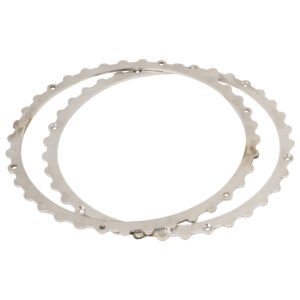
Processes of Sheet Metal Forming
Bending
A piece of sheet metal is placed on a die in this process with a specific geometry. The punch presses into the material to form the sheet metal to the die. Seemingly easy bending can be tricky practically. We can understand the ordeal by an instance of using a 45° V-die, the material does not reach inside the V due to the thickness.
Hemming
Hemming provides straightedge without burrs. Hence, it can prove very useful when shearing processes are not available. Hemming is bending of the sheet metal upon itself. This is a two-stage process. Firstly, a piece of sheet metal is bent into a V-die. Secondly, it is removed and placed into a flattening die to flatten the hem. Hemming and curling are different techniques because of the exposed raw edge.
Curling
Curling creates a nice rounded edge by covering the rough edge inside the curl. We employ three steps generally in curling and can also use it for hinging applications. A piece of sheet metal is pressed into a circular die in two locations and, then, closed together with a circular punch.
Rolling
Two or more hydraulic press rollers are used to fabricate the metal sheet. We can shape the material into versatile figures by changing the geometrics and distances of the rollers.
Roll Forming
Roll forming uses long sheets and enhanced rolling of the different spectrums to form intricate sheets. This process is utilized to mold different types of tubing, channeling, or complex shaping.
Metal Spinning
It consists of a disk or cylinder of sheet metal, placed on a mandrel, on a lathe, and a roller tool shapes the sheet to the mandrel shape. Metal spinning is either conventional or shear spinning.
Deep Drawing
Deep drawing machinery works similar to shear punch but, there is more gap between punch and die. A die holds the material and the punch draws into the sheet metal to stretch and form the material.
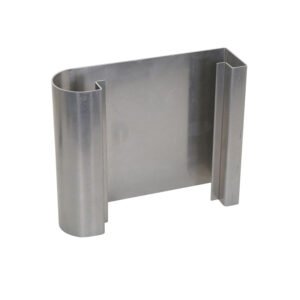
Sheet Metal Materials and Applications
Cold-Rolled Steel
It is comparatively cheap and rolled at room temperature. Cold rolled steel is only limited to 3 mm thickness but comes with a nicer surface. So it fits in applications that require nice smooth finishes including home appliances, furniture, lockers, and cabinets. Cold rolled steel is also used in larger structures, e.g. steel sheds and garages.
Hot Rolled Steel
It is formed in a heated state as the name suggests. Hot rolled steel is also found as thicker sheets. Hot rolling allows easier forming making it cost-efficient.
Hot rolled steel does not have accurate dimensions. After rolling, the metal cools down and shrinks. This causes concentrations of stresses that can warp the material or change the measurements.
Stainless Steel
These sheets are good in corrosive environments where strength is also important. It is used for all kinds of surgical instruments, cutlery, kitchen accessories, sinks, etc. Some of the industrial uses are for storage tanks, valves, and piping, etc.
Aluminum Sheets
As it comes with a heavy price tag, yet not used commonly by people. Still, aluminum finds a lot of scope in the market because of its salient qualities. It is corrosion-resistant, strong, and lightweight. These qualities make it special for the transportation industry where extra weight causes long-term losses. Many advanced consumer gadgets like phones and laptops have a durable aluminum casing that is also light in weight.
Copper Sheets
Copper sheets are available in different variants to fulfill versatile demands. Copper brass, copper, beryllium copper are widely used among them. The salient features of the copper make it a favorite for many.
- High electrical conductivity
- Easily recycled and reused
- High resistance to corrosion
- Flexibility
- Impedes growth of bacteria
Copper can cost you fairly high even though it’s not as strong as aluminum or steel. Handling it can be difficult during machining or welding. It responds well to bending by creating beautiful results. It does not catch rust, but it can age into a unique finish. Copper is frequently used for pots and pans, fixtures, and electronic equipment.
Commercial copper sheet metal has high purity ratings. Both of the variants it is supplied in, consist of more than 99% copper. Impurities like oxygen, lead, or silver may fill the remaining tiny share. It is highly bendable, formable, and electrically conductive. Hence, making the use of copper for sheet metal applications is easier than other less ductile materials.
Brass Sheets
Brass is a combination of copper and zinc. Due to its strong acoustic properties, it’s the main metal in many instruments. Moreover, it is also found in items of daily life like doorknobs, nuts, bolts, and pipes.

